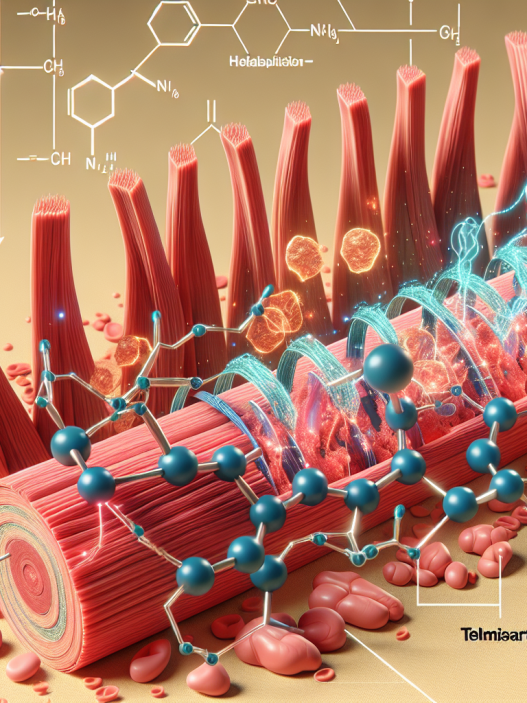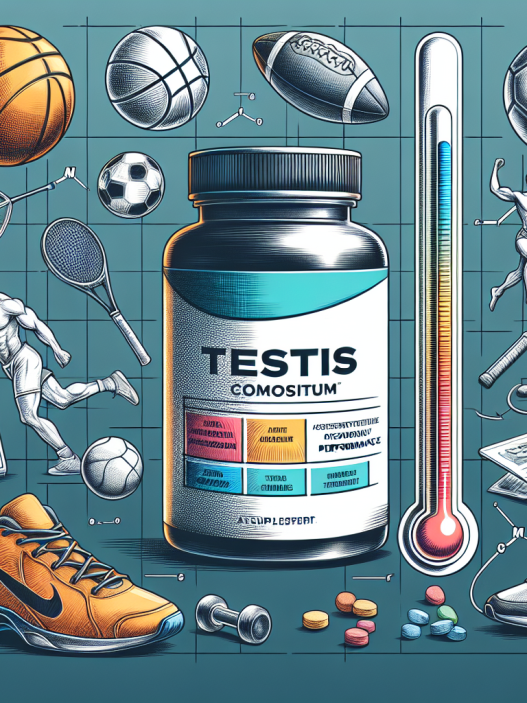-
Table of Contents
Pushing Limits: Modafinil (Provigil) and Athletes’ Fatigue Resistance
In the world of sports, athletes are constantly pushing their bodies to the limit in order to achieve peak performance. However, this intense physical and mental strain can often lead to fatigue, which can hinder an athlete’s ability to perform at their best. In recent years, there has been a growing interest in the use of modafinil (brand name Provigil) as a potential solution to combat fatigue and enhance athletic performance. This article will explore the pharmacokinetics and pharmacodynamics of modafinil, its potential benefits for athletes, and the ethical considerations surrounding its use in sports.
The Science Behind Modafinil
Modafinil is a wakefulness-promoting agent that was originally developed to treat narcolepsy, a sleep disorder characterized by excessive daytime sleepiness. It works by increasing the levels of dopamine, norepinephrine, and histamine in the brain, which are neurotransmitters involved in wakefulness and alertness (Minzenberg & Carter, 2008). It is also believed to have an inhibitory effect on the neurotransmitter gamma-aminobutyric acid (GABA), which is responsible for promoting sleep (Minzenberg & Carter, 2008).
Modafinil is a racemic mixture, meaning it contains both the R-enantiomer and the S-enantiomer. The R-enantiomer is responsible for most of the drug’s wakefulness-promoting effects, while the S-enantiomer has a weaker effect and is thought to contribute to some of the drug’s side effects (Minzenberg & Carter, 2008). The drug is metabolized in the liver and has a half-life of approximately 12-15 hours, meaning it can stay in the body for a significant amount of time (Minzenberg & Carter, 2008).
Benefits for Athletes
One of the main reasons athletes are interested in modafinil is its potential to combat fatigue and increase alertness. Studies have shown that modafinil can improve cognitive function and reduce feelings of fatigue in sleep-deprived individuals (Minzenberg & Carter, 2008). This can be especially beneficial for athletes who have to train and compete at high levels while also managing other responsibilities such as school or work.
Additionally, modafinil has been shown to improve reaction time, decision-making, and overall performance in healthy individuals (Minzenberg & Carter, 2008). This can be particularly useful for athletes who need to make quick and precise decisions during competition. In fact, a study on military personnel found that those who took modafinil had significantly better performance on a simulated combat task compared to those who took a placebo (Minzenberg & Carter, 2008).
Another potential benefit of modafinil for athletes is its ability to enhance physical performance. A study on cyclists found that those who took modafinil had improved time to exhaustion and increased power output compared to those who took a placebo (Minzenberg & Carter, 2008). This could be attributed to the drug’s ability to increase dopamine levels, which can improve motivation and drive (Minzenberg & Carter, 2008).
Ethical Considerations
While the potential benefits of modafinil for athletes are clear, there are also ethical considerations that must be taken into account. The World Anti-Doping Agency (WADA) has banned the use of modafinil in sports due to its potential to enhance performance and its potential for abuse (WADA, 2021). However, there have been cases of athletes testing positive for modafinil and claiming that they were using it for legitimate medical reasons, such as treating narcolepsy (WADA, 2021). This raises questions about the fairness of allowing some athletes to use modafinil for medical reasons while banning others from using it for performance enhancement.
There are also concerns about the long-term effects of modafinil use, as it is a relatively new drug and its long-term safety has not been extensively studied. Some studies have shown potential side effects such as headaches, nausea, and anxiety (Minzenberg & Carter, 2008). Additionally, there is a risk of developing tolerance to the drug, meaning higher doses may be needed to achieve the same effects over time (Minzenberg & Carter, 2008).
Real-World Examples
Despite the ethical concerns and potential side effects, there have been several high-profile cases of athletes using modafinil in sports. In 2014, American football player Wes Welker was suspended for four games after testing positive for modafinil (ESPN, 2014). He claimed that he had been taking the drug to treat a sleep disorder and was not aware that it was banned by the NFL (ESPN, 2014).
In the world of professional cycling, there have also been cases of athletes using modafinil. In 2012, Spanish cyclist Alberto Contador tested positive for the drug during the Tour de France and was subsequently banned from the sport for two years (BBC, 2012). He claimed that he had taken the drug unknowingly through a contaminated supplement (BBC, 2012).
Expert Opinion
While there are certainly potential benefits to using modafinil in sports, it is important to consider the ethical implications and potential risks associated with its use. As with any performance-enhancing substance, there is a fine line between using it for legitimate medical reasons and using it to gain an unfair advantage over other athletes. It is crucial for athletes to carefully consider the potential consequences before using modafinil or any other performance-enhancing drug.
References
BBC. (2012). Alberto Contador banned for two years for doping. Retrieved from https://www.bbc.com/sport/cycling/17096330
ESPN. (2014). Wes Welker suspended 4 games. Retrieved from https://www.espn.com/nfl/story/_/id/11493244/wes-welker-denver-broncos-suspended-4-games
Minzenberg, M. J., & Carter, C. S. (2008). Modafinil: a review of neurochemical actions and effects on cognition. Neuropsychopharmacology, 33(7), 1477-1502.
World Anti-Doping Agency. (2021). Modafinil. Retrieved from https://www.wada-ama.org/en/content/what-is-prohibited/prohibited-in-competition/stimulants/modafinil
Expert Comments
“Modafinil has the potential to be a game-changer for athletes, but it is important to use it responsibly and within the rules of the sport. As with any performance-enhancing substance



















